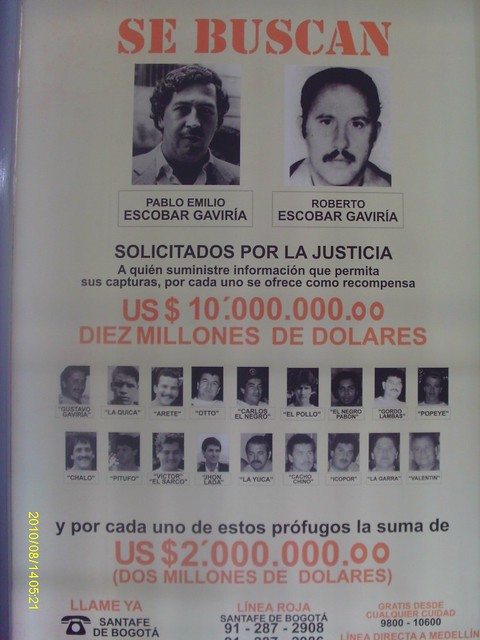Book Review: Alternative Movie Posters
By Adrian Curry on July 29, 2014
Alternative Movie Posters: Film Art from the Underground
By Matthew Chojnacki
Schiffer Publishing Ltd., $34.99
Billed as “the first book to document the spectacular art of underground film posters,” Matthew Chojnacki’s Alternative Movie Posters: Film Art from the Underground is a fairly comprehensive snapshot (or let’s say family album) of a convergent moment in cinephilia and graphic design. Born out of the gig poster phenomenon of the past decade, and cross-pollinated with the surge of fan-produced fake Criterion covers that sprang up all over the Internet, the alternative movie poster scene has flourished in the past few years, producing a parallel universe of cult-film art, much of which Chojnacki has collected here.
Though comprised of both online fan art and limited-edition screen prints by accomplished artists, the book’s examples are not so much movie posters as they are souvenirs of movies. They were never created expressly to introduce a film to the public consciousness and sell it to the widest audience (though plenty of them would have done a better job than the original studio-sanctioned designs). Instead, for the most part, these works commemorate and re-imagine films that have already entered some sort of canon or garnered a following.
Alamo Drafthouse’s collectible art boutique Mondo has of course spearheaded and legitimized (and monetized) the movement, and when a number of Mondo posters recently popped up in a Christie’s auction of “Vintage Movie Posters,” it marked a watershed moment of respectability.
One thing the phenomenon of alternative movie posters has done is give a high-profile outlet to illustrators, at a time when illustration had started to seem like a doomed profession, and it is heartening to see the wealth of talent that is out there. Once nearly the sole medium for movie advertising, illustration has been little used in movie posters since the 1960s (with a brief airbrushed resurgence in the ’80s). Photoshop killed the movie-poster star for sure, but then again it is digital tools that have given rise to this rebirth of hand-drawn art.
Chojnacki has selected from work by over 100 artists from 20 different countries to present more than 200 posters (out of 10,000 he looked at). Some were created especially for the book, which presents each poster next to a brief bio and interview with the artist. Though a number of the major players are missing—towering talents like Tyler Stout, Tom Whalen, Olly Moss, Akiko Stehrenberger, and Laurent Durieux—the book includes several superb artists that I was already familiar with (such as Jay Shaw, Jason Munn, Heath Killen, Viktor Hertz, and Matt Needle), and it was a treat to discover others I hadn’t seen before.
Many of the featured designers (perhaps too many) tend to worship at the twin temples of Saul Bass and Drew Struzan, the minimalist and maximalist gods of 20th-century poster design. The Bass homages in particular are far too plentiful. Another problem, common in the fan-art phenomenon generally, is its limited frame of reference. More than half of the films featured in the book were made since the mid-1980s, and probably only about 20 date from before the ’70s. There are very few foreign films (I counted just Le Corbeau, 8 1/2, Léon: The Professional, The Artist, and two films by Dario Argento), and the same directors tend to crop up repeatedly, namely, the Coen Brothers, John Carpenter, David Lynch, Tim Burton, Stanley Kubrick, Ridley Scott, and Wes Anderson.
That being said, the book contains a treasure trove of witty, inventive, and beautifully executed designs, all expressing a geeked-out love for their subjects. Some of my personal favorites are these below.
Irish artist Peter Strain’s pared-down compositions of nearly monochrome images and hand-lettered text...
Lovely geometric color wheels from British artist Simon C. Page...
(click to enlarge)
This Cinefamily commission for a rare pre-1960s film in the book (a 1916 Jules Verne adaptation) by Los Angeles’s Dimitri Simakis...
Minimalist classics from Jason Munn, better known as gig poster genius The Small Stakes...
(click to enlarge)
This richly illustrated John Waters homage from Milwaukee’s Little Friends of Printmaking...
Nouveau-retro monster posters from British artist James Gilleard...
(click to enlarge)
Maryland artist Joshua Budich’s Struzan-esque poster for a director who has inspired more fan art than any other...
And, for the Wes Anderson film that may have generated the most fan art of all, this gem from Wales-based Matt Needle…
Cult ’80s movies as cereal boxes, by New Jersey’s Ian Glaubinger...
(click to enlarge)
Italian artist Ale Giorgini’s crowded geometric cartoons...
(click to enlarge)
And finally, an old favorite by Sweden’s Viktor Hertz, one of the best to come out of the minimalist movie poster craze...
Adrian Curry writes the Graphic Detail column in FILM COMMENT and is the design director for Zeitgeist Films.


%2B(1).jpg)




+-+Diane+et+Acteon+1990.jpg)











